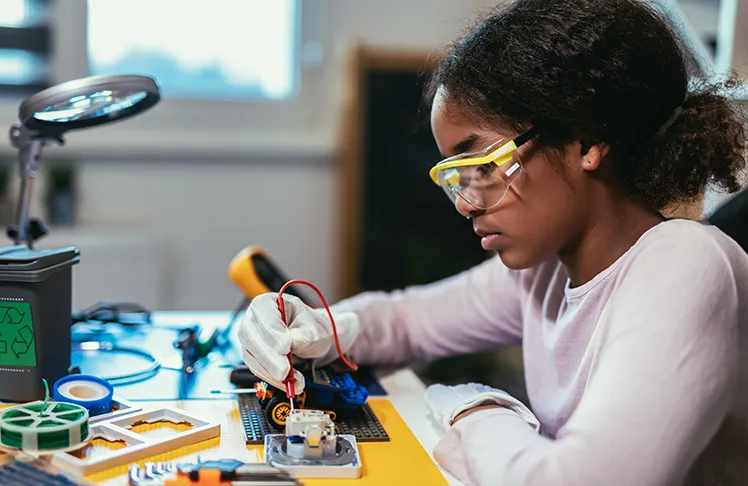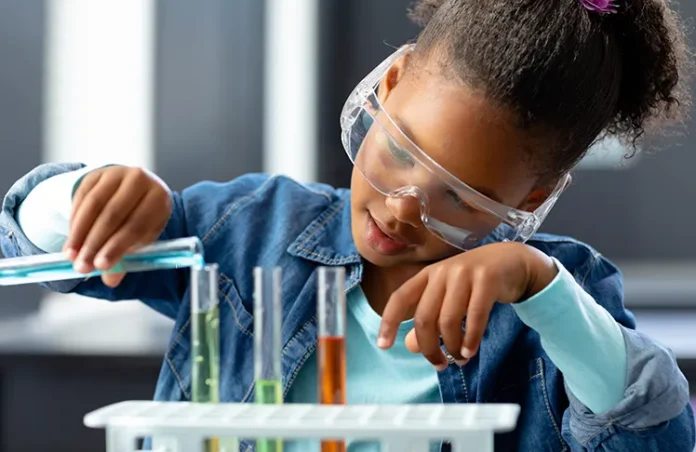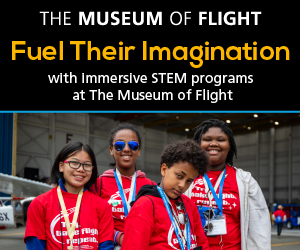Parenting Today
“Everybody starts out as a scientist. Every child has the scientist’s sense of wonder and awe,” said the astronomer Carl Sagan (The National Academies of Science, Engineering and Medicine, 1998).
Marie Montessori also believed that children have the innate qualities of scientists, including a drive for discovery, curiosity, and seeking out answers to “what if” questions. For parents looking to engage their children’s natural curiosity or interest in science, YouTube offers numerous channels full of fun experiments to try at home.
The Fun Science channel’s videos include easy science experiments to do at home, science tricks, and ideas for science fairs. You’ll also find experiments organized by specific items such as water, salt, sugar, or eggs. The videos are short, easy to follow, contain warnings when adult supervision is recommended, and use ingredients you likely have at home.
Sergei, creator of TheDadLab, does science experiments with his two young boys. It is charming to watch their reactions to the results of the simple and fun activities. The channel’s “5 Best” series includes Dry Ice Experiments, Cool Electricity Science to do at Home, and STEAM challenges such as DIY Toy Cars That Move.
Incredible Science has hundreds of videos, many with experiments you can do at home. Make a colorful tornado bottle, try DIY fidget spinners and tricks, or check out Six Cool and Easy Experiments.
Science Buddies is a charitable organization that provides free “high-quality scientist-authored explorations” to parents, teachers, and children. 30 Fun Science Activities You Can Do at Home includes making your own slime, marble catapult, lemon volcano, candy gears, or an airplane launcher, with links to the experiments in the description. It’s a fun way to show your kids many possibilities and find out what they are most interested in trying. Older kids may enjoy learning how to make a solar-powered pizza box oven or digging into physics or robotics.
The videos on the Doctor Mad Science channel are hosted by 15-year-old Jordan. Wanting his viewers to understand that science is everywhere, all experiments use household items. In his videos, Jordan describes which materials are needed and then demonstrates the experiment. He makes slime, crushes soda cans with steam, or explains what science is at work when we jump on a trampoline.

Sick Science by Steve Spangler has hundreds of science experiments. His Summer Science playlist includes a Homemade Kaleidoscope, Homemade Ice Cream, and guide to making a Square Bubble. The channel also has a physics and chemistry playlist.
Raising da Vinci’s 10 Easy Science Experiments video includes invisible ink, a DIY hovercraft, and bending water. The homeschooling mom also has videos for pre-k to third graders on rainbow science, using balloons, magic tricks that use science, and holiday-themed activities.
Another channel with science experiments aimed at younger children is Little Bins for Little Hands. The science playlist includes holiday-themed activities, volcanoes, growing crystals, and weather-related activities. They even have a playlist with experiments based on the work of important scientists in history.
SciTech WA’s channel from the Scitech Science Center in Australia is full of unique science experiments their community of scientists created. Videos include CSI Activities to Do at Home, Explosive Elephant Toothpaste, Invisible Fire Extinguisher, and a science demonstration of What’s Causing the Sea Levels to Rise.
It is vital to understand the risks and take safety precautions when doing at-home experiments. Adults should always supervise experiments. Wear safety goggles and other protection when working with chemicals and fire. Read all instructions carefully, and do not substitute ingredients without prior research. Most of all, have fun and learn a ton!
















